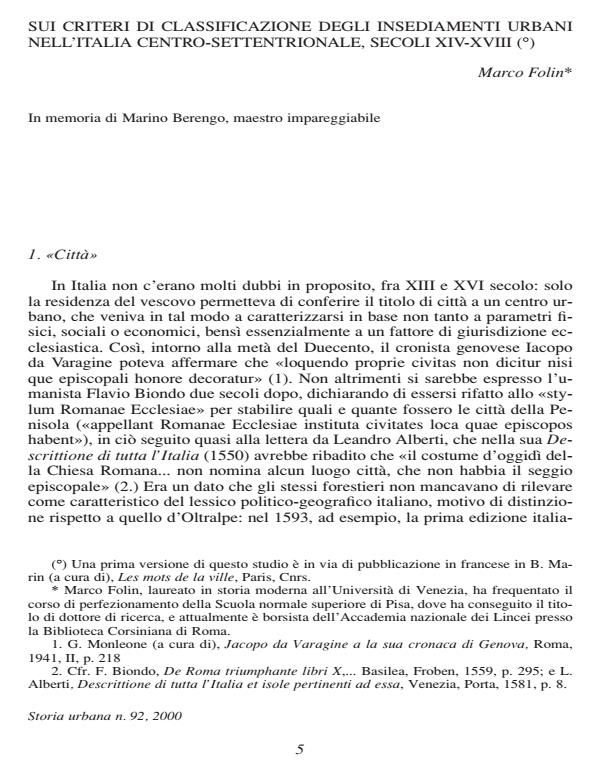Sui criteri di classificazione degli insediamenti urbani nell'Italia centro-settentrionale, secoli XIV-XVIII
Journal title STORIA URBANA
Author/s Marco Folin
Publishing Year 1 Issue 2000/92
Language Italian Pages 19 P. File size 87 KB
DOI
DOI is like a bar code for intellectual property: to have more infomation
click here
Below, you can see the article first page
If you want to buy this article in PDF format, you can do it, following the instructions to buy download credits

FrancoAngeli is member of Publishers International Linking Association, Inc (PILA), a not-for-profit association which run the CrossRef service enabling links to and from online scholarly content.
In Italy, up to the end of the 16th century, and (in many ways) even later, the term città not only indicated an urban settlement, but also, more specifically, a district capital that was ab antiquo the centre of a diocese. The term had a marked political meaning, then, and distinguished those capitals with a certain jurisdictional autonomy from all the other settlements (terre, ville, castelli), which, regardless of their size, were still part of the provinces (the contado) and, therefore, always subject to a higher power. This taxonomy had repercussions on the identity of the municipal elite, who (as the holders of public rights) could only consider themselves «noble» in their own città, which explains why several small Italian towns fought hard to acquire the title of città. In modern times, however, a different kind of urban classification, based on physical and economic factors, gradually came into being, yet the new taxonomy, already enunciated by Botero, was only ratified formally following the French Revolution, when all Italian municipalities were divided into different demographic classes.
Marco Folin, Sui criteri di classificazione degli insediamenti urbani nell'Italia centro-settentrionale, secoli XIV-XVIII in "STORIA URBANA " 92/2000, pp , DOI: